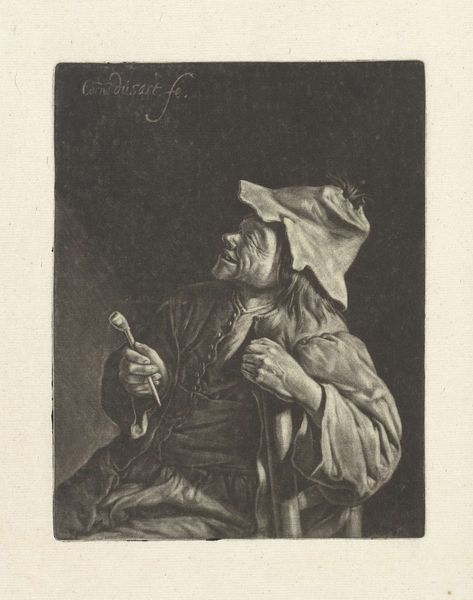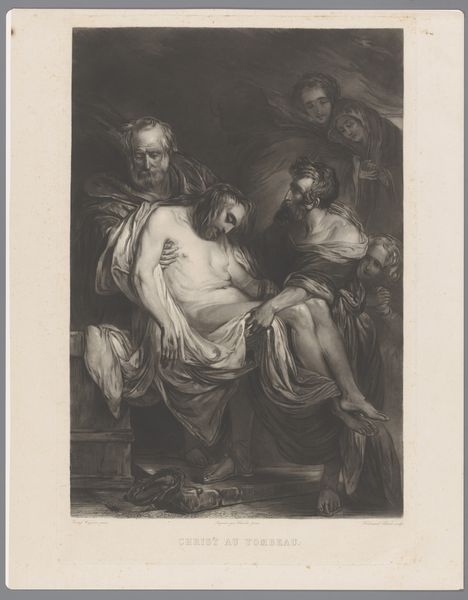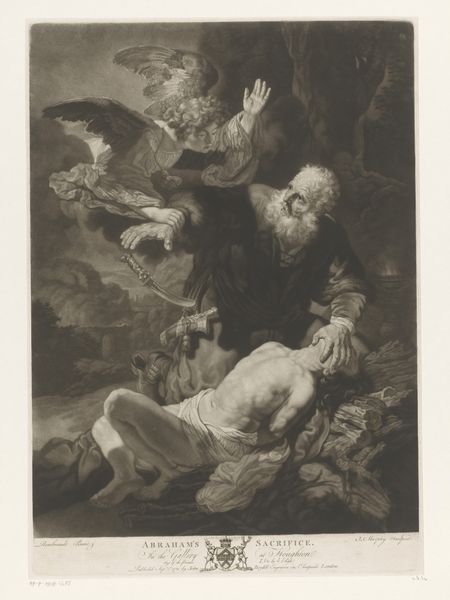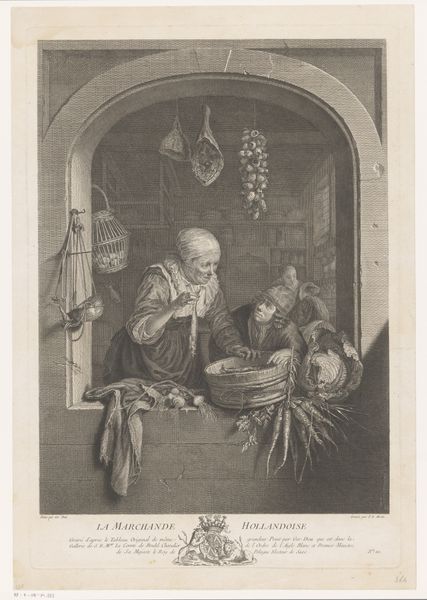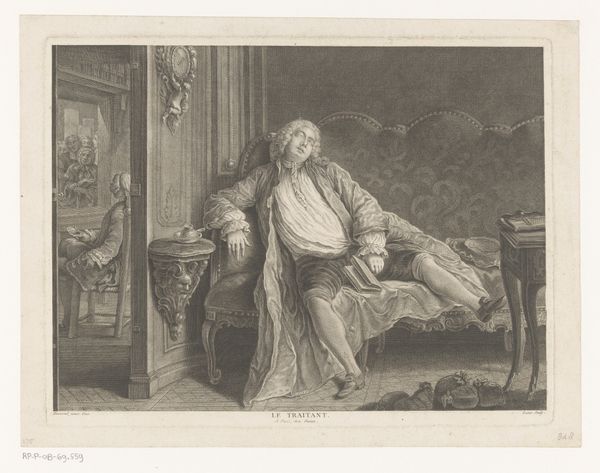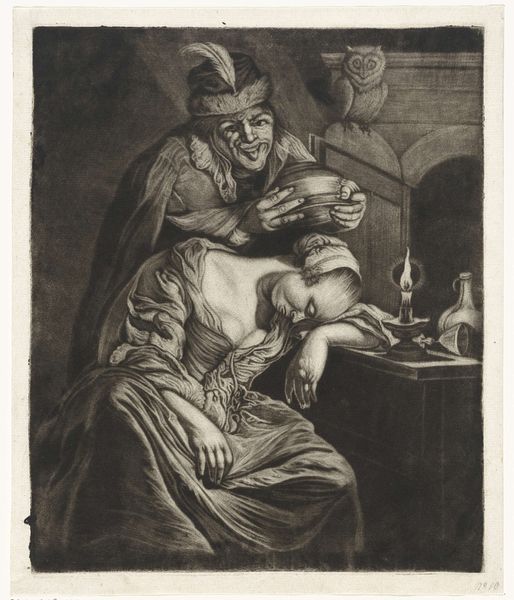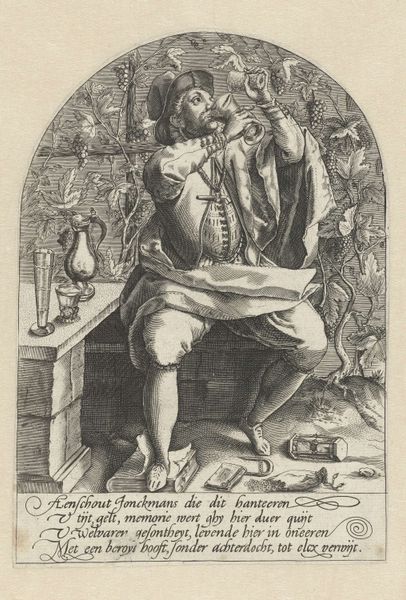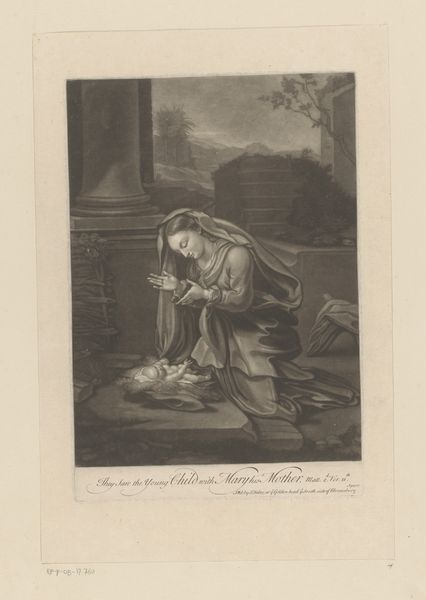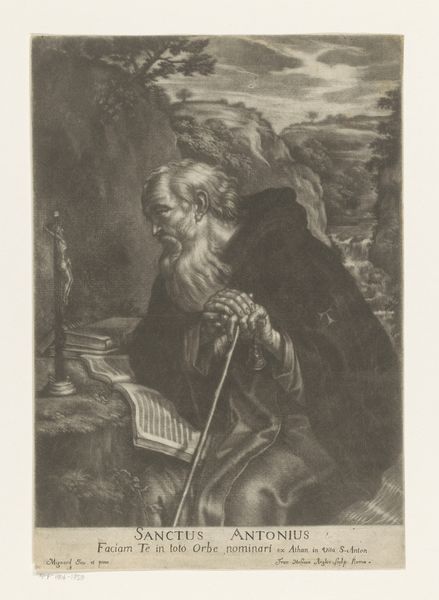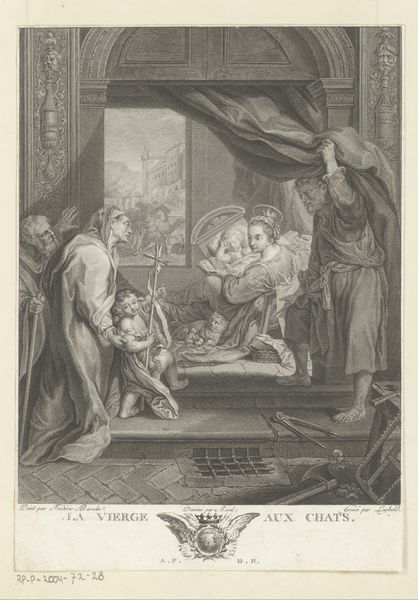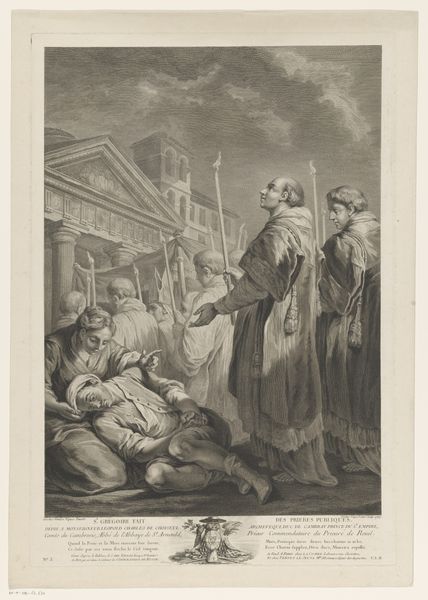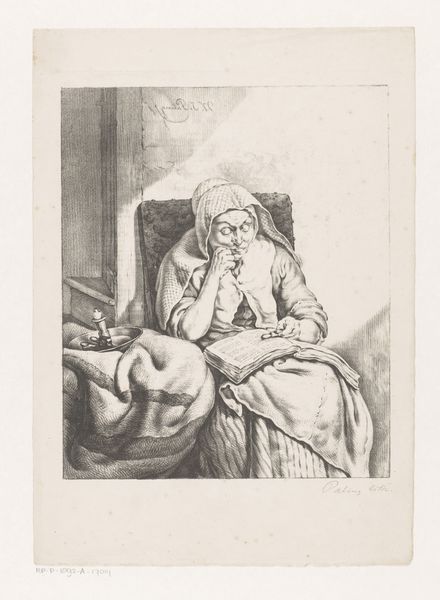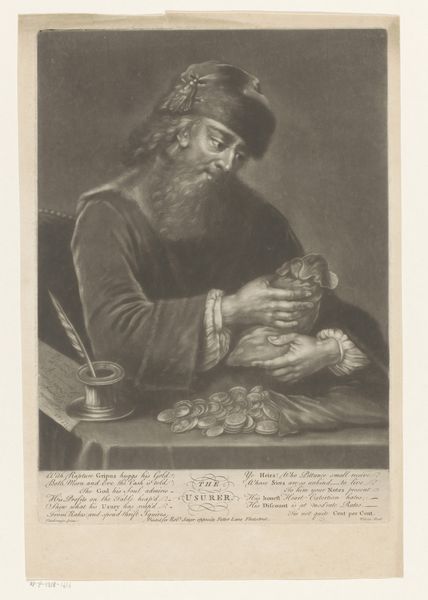
Dimensions: height 506 mm, width 355 mm
Copyright: Rijks Museum: Open Domain
Editor: Here we have Richard Earlom's engraving, "Elias wekt de zoon van de weduwe van Sarefat tot leven" from 1768. The dramatic lighting is compelling, especially how it spotlights the two figures. What catches your eye about this work? Curator: The engraving process itself is fascinating. Consider the labor involved in producing these lines, the tools used, and the accessibility that prints provided at the time. It brings the sacred narrative into more homes. How do you think the materiality influences our understanding? Editor: That's an interesting point! It does make it feel more... commonplace, almost. A painting on commission would be a singular, rarefied object. A print is reproducible and cheaper. Does that diminish the perceived "value" of the story? Curator: Perhaps. Or does it democratize faith? The means of production certainly affected reception. The narrative shifts from divine revelation to something more intertwined with the societal fabric and labor practices. Where do you see evidence of the socio-economic conditions of the time within this print? Editor: Hmm… Maybe the detailed depiction of the interior? The relatively sparse room suggests a middle-class setting rather than opulence, perhaps reflecting the lives of many who would own such a print. Curator: Precisely! It's not just about religious instruction; it's a reflection of contemporary material culture mediated through a biblical lens. The very act of engraving, of making art accessible, speaks volumes about its intended audience. Editor: That's given me a completely new way of looking at it. I was so focused on the story itself, but the medium really is the message here, isn't it? Curator: Exactly! It's a potent reminder that art is always embedded in its social and material circumstances, from the artist's tools to the patron’s purse.
Comments
No comments
Be the first to comment and join the conversation on the ultimate creative platform.
